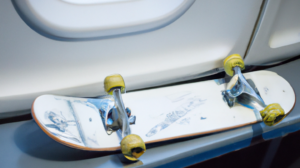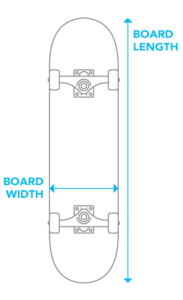Longboarding is a popular sport that offers an exciting way to explore your surroundings while enjoying the thrill of riding. Whether you’re looking to cruise around town, carving hills, or bomb down steep roads, choosing the right longboard is crucial for a comfortable and safe ride. This article will explore tips and factors to consider when choosing a longboard that suits your needs and style.
Purpose:
The first thing to consider when choosing a longboard is the purpose for which you’ll be using it. Different types of longboards are designed for different riding styles, so choosing one that fits your goals is important. Here are some common styles:
Cruising: If you want to use your longboard for casual rides around town, commuting, or running errands, a cruiser board would be a good option. Cruiser boards are typically shorter and wider, making them easier to manoeuvre around tight corners and navigate crowded areas.
Carving: A carving board would be ideal if you’re looking for a board that can handle more aggressive turns and sharp curves. These boards are typically longer and more flexible, allowing you to easily make quick turns and cut-through corners.
Downhill: If you’re looking for an adrenaline rush and want to go fast down steep hills, a downhill board is what you need. These boards are longer and stiffer, providing stability at high speeds.
Freeride: A freeride board is a good option if you want to do a bit of everything, from sliding to downhill and carving. These boards are typically symmetrical and come with a drop-through or top-mount design, allowing for more versatility.

Board shape:
Longboards come in different shapes, and the board’s shape can affect how it handles, rides, and performs. The most common shapes are:
Pintail: This shape is often used for cruising, and it has a narrow tail and wide nose, giving it a teardrop shape. It provides a stable ride and is easy to turn.
Drop-through: This shape is often used for freeride and downhill riding. The trucks are mounted through the board, lowering the centre of gravity and making the board more stable.
Top-mount: This shape is often used for carving and downhill riding. The trucks are mounted on top of the board, making them more responsive and easier to turn.
Board size:
The size of the board is another important factor to consider. The length and width of the board can affect how it handles, and your body size can also impact what size board you should choose. Here are some general guidelines:
Short boards: Ideal for smaller riders or for cruising around tight spaces.
Medium boards: Ideal for most riders who want a balance between stability and manoeuvrability.
Longboards: Ideal for larger riders or those who want maximum stability for downhill riding.
Deck material:
The deck material is also an important factor to consider. The most common materials are:
Maple: This is the most common material for longboards and provides a balance of stiffness and flexibility.
Bamboo: This material is more eco-friendly and provides a more flexible ride.
Fibreglass: This material is used for downhill and freeride boards, as it provides a stiff and stable ride.
Trucks and wheels:
The trucks and wheels are also important components to consider. The type of truck and wheel you choose can affect your board’s stability, speed, and manoeuvrability. For example, larger wheels are better for cruising, while smaller wheels are better for carving and freeriding.
Conclusion
In conclusion, choosing the right longboard can be a daunting task. Still, considering the purpose, shape, size, deck material, and trucks and wheels, you can narrow down your options and find a board that suits your needs and style. It’s important to choose a longboard that you feel comfortable riding, and that matches your skill level.







